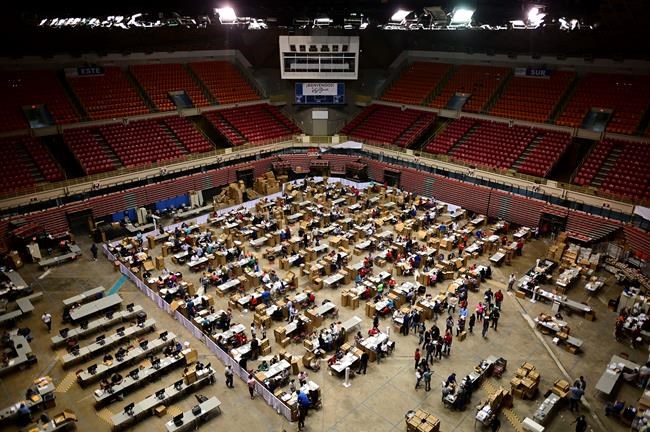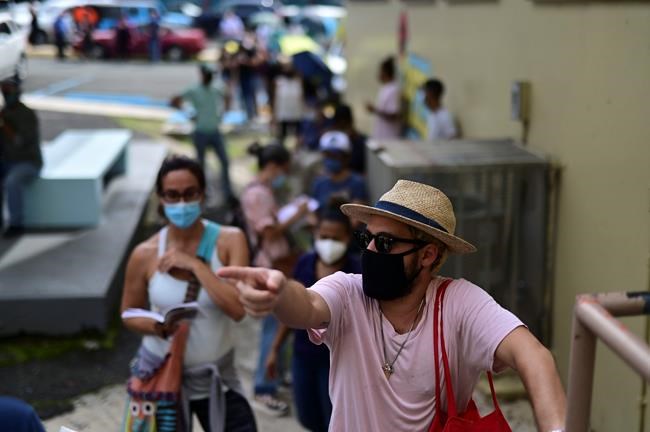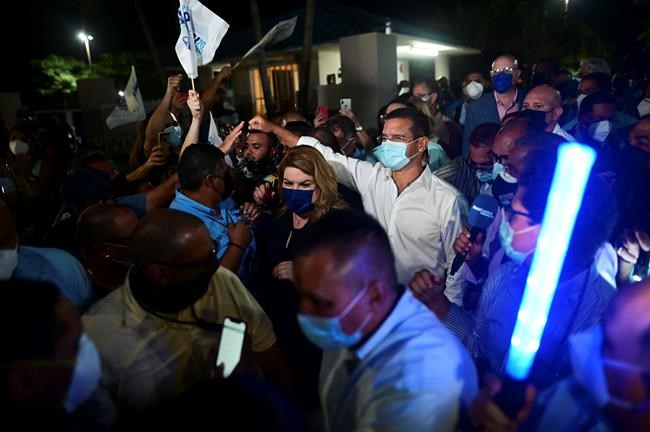Puerto Rico awaits final result in tight gubernatorial race
Advertisement
Read this article for free:
or
Already have an account? Log in here »
To continue reading, please subscribe:
Monthly Digital Subscription
$0 for the first 4 weeks*
- Enjoy unlimited reading on winnipegfreepress.com
- Read the E-Edition, our digital replica newspaper
- Access News Break, our award-winning app
- Play interactive puzzles
*No charge for 4 weeks then price increases to the regular rate of $19.00 plus GST every four weeks. Offer available to new and qualified returning subscribers only. Cancel any time.
Monthly Digital Subscription
$4.75/week*
- Enjoy unlimited reading on winnipegfreepress.com
- Read the E-Edition, our digital replica newspaper
- Access News Break, our award-winning app
- Play interactive puzzles
*Billed as $19 plus GST every four weeks. Cancel any time.
To continue reading, please subscribe:
Add Free Press access to your Brandon Sun subscription for only an additional
$1 for the first 4 weeks*
*Your next subscription payment will increase by $1.00 and you will be charged $16.99 plus GST for four weeks. After four weeks, your payment will increase to $23.99 plus GST every four weeks.
Read unlimited articles for free today:
or
Already have an account? Log in here »
Hey there, time traveller!
This article was published 03/11/2020 (1863 days ago), so information in it may no longer be current.
SAN JUAN, Puerto Rico – People across Puerto Rico awaited final results Wednesday of elections that saw long lines of voters and produced a tight gubernatorial race in the U.S. Caribbean territory.
Pedro Pierluisi of the pro-statehood New Progressive Party held a slight lead over Carlos Delgado of the Popular Democratic Party, which supports the island’s current status. More than 12,000 votes separated the top two candidates after counting more than 95% of the ballots cast Tuesday as well as some returns from early and absentee ballots, which were also still being tallied.
Pierluisi celebrated the early results and held a news conference, while Delgado said shortly after midnight that he would await final results.

“It’s irresponsible,” Delgado said of Pierluisi’s actions.
Meanwhile, Jenniffer González, Puerto Rico’s current representative in U.S. Congress and Pierluisi’s running partner, easily won a second term.
The preliminary results disappointed voters like 69-year-old David Jorge Santos, who said he had been a longtime supporter of one of the two main parties — though he declined to say which — but this year voted for a new party because he said the New Progressives and Popular Democrats don’t deliver.
“It’s one promise after another and they don’t do anything,” Santos said.
It’s the first time that neither of Puerto Rico’s two main parties won more than 40% of the overall vote and neither will hold a majority in the legislature, according to preliminary results. New parties and candidates won several legislative seats.
The island’s Senate also for the first time will have a gay Black woman as a member.

“There were fundamental changes,” said political analyst Domingo Emanuelli.“They’re seeking candidates not based on ideology, gender or party, but because they’re decent. This is work that takes four, five, 10 years, but the people have already started.”
Voters also favoured a nonbinding referendum that asked, “Should Puerto Rico be admitted immediately into the union as a state?,” which was backed by more than 52% support, with more than 95% of votes counted.
However, U.S. Congress would have to approve of any changes to the island’s political status.
The race to become mayor of Puerto Rico’s capital also was extremely tight, with only hundreds of votes separating two candidates, including one from a new party. The winner would replace Carmen Yulín Cruz, known for her public spats with U.S. President Donald Trump.
As results trickled in late Tuesday, car horns blared and occasional fireworks pierced the night as supporters celebrated.

Trailing the two main candidates were Juan Dalmau of the Puerto Rican Independence Party, which for the first time since the 1950s obtained double-digit support, Alexandra Lúgaro of Citizen Victory Movement, César Vázquez of the Dignity Project and independent candidate Eliezer Molina.
It was the first election held since Hurricane Maria hit the island in 2017, causing damages estimated at more than $100 billion and killing an estimated 2,975 people.
Less than two years after the storm, hundreds of thousands of Puerto Ricans took to the streets in protest and prompted Gov. Ricardo Rosselló to quit, an event known as the “Summer of 2019” that was sparked by a leaked chat in which the then-governor and other officials made fun of hurricane victims, among other things, and made comments that led to an investigation into possible corruption.
Pierluisi briefly served as governor following last year’s protests and previously represented Puerto Rico in Congress for eight years. He and Rosselló are from the same party.
The candidates faced a dwindling voter base because of emigration caused by hardship. There are 2.36 million eligible voters, compared with 2.87 million in 2016 and 2.4 million in 2012.

Despite the drop in eligible voters, the diversity of parties and candidates has increased in recent years, eroding the grip of the traditional parties.
Rafael Fonseca, an administrator, said he had hoped neither of the two parties would win this year.
“They’ve been doing the same thing for years and there’s no change,” he said, adding that the island’s public education system needs to be improved and wages increased to prevent the loss of young people moving to the U.S. mainland in search of work.
Fonseca lamented that the energy fueling last year’s protests and demands for new leaders seemed to have dissipated.
“Puerto Ricans have a short memory,” he said, adding that he remains hopeful a non-traditional party will eventually lead Puerto Rico. “Possibly not in my lifetime.”

The election came amid an economic crisis and efforts to restructure a portion of Puerto Rico’s more than $70 billion public debt, which officials declared unpayable in 2015.
The new governor will have to work alongside a federal control board that oversees Puerto Rico’s finances and has previously clashed with local officials over austerity measures, including proposed public pension cuts.



